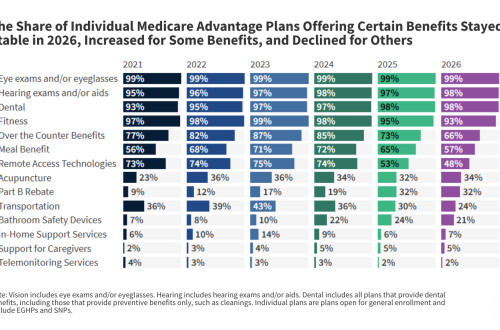Article Summary
Adolescents face key challenges including poor mental health, rising obesity rates, digital safety issues, and exposure to violence and climate change, according to a global report from the 2025 Lancet Commission on Adolescent Health and Wellbeing. The report highlights the need for increased investment in adolescents’ health and wellbeing, as they make up 24% of the population but receive just 2.4% of global development and health funding. Potential solutions include advocating for change, developing goal-centered approaches, and strengthening actions within health and education sectors.
What This Means for You
- Urge for more investment in adolescents’ health and wellbeing to address the identified challenges.
- Consider advocating for change and amplifying adolescents’ voices in community-based programs and policy discussions.
- Promote healthy use of social media and online spaces, and limit exposure to harmful advertising targeting adolescents.
- Look out for future developments and increased focus on adolescent health and wellbeing in public health initiatives and policy-making.
Original Post
Poor mental health, rising obesity rates, exposure to violence and climate change are among the key challenges facing our adolescents today, according to a global report.
The 2025 Lancet Commission on Adolescent Health and Wellbeing, featuring experts from the Murdoch Children’s Research Institute (MCRI), revealed that investing in adolescents’ health and wellbeing could lead to significant improvements in economic, social, and public health for future generations. However, current investments do not match the scale of the problems faced by young people.
The report states that, by 2030, over half of adolescents will live in countries where their demographic faces an excess burden of complex disease. Key challenges faced by this age group include:
- High cases of poor mental health and limited support services
- Increasing rates of obesity due to complex environmental and commercial factors
- Lack of digital safety and exposure to cyberbullying and misinformation
- Experiencing violence in conflict-affected areas and within the home
- Ongoing fallout from the COVID-19 pandemic and related public health measures
- Widening gaps in reproductive rights, particularly for young women
- Environmental challenges and climate change impacts
By 2050, 70% of the world’s adolescents will live in urban areas. The report emphasizes the need for safe and engaging urban spaces for adolescents, which would have a significant impact on health outcomes. It also noted that urgent action must be taken to protect young people from violence and ensure equitable access to education and reproductive rights.
MCRI Professor Peter Azzopardi called for targeted actions focusing on early intervention. Meaningful, evidence-based, multi-sector partnerships with young people are seen as the key to improving health and wellbeing.
Potential solutions include advocating for change, developing goal-centered approaches, and strengthening actions within health and education sectors while reinforcing collaborations. Other proposed actions are limiting the exposure of advertising targeting adolescents and promoting healthy use of social media and online spaces.
Key Terms
- Adolescent health
- Global development
- Mental health
- Obesity rates
- Digital safety
ORIGINAL SOURCE:
Source link



